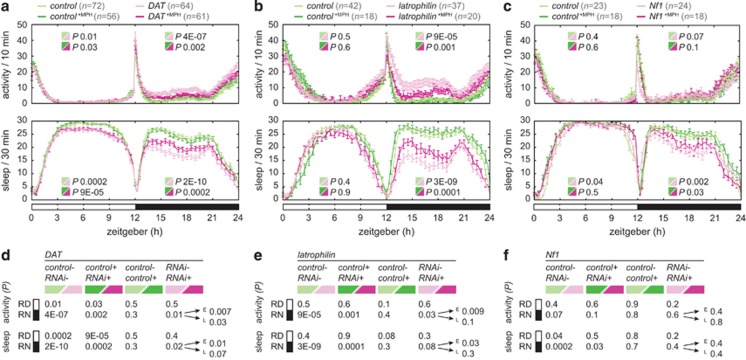Figure 5.
Hyperactivity in Drosophila ADHD models is ameliorated by methylphenidate. (a–c) Activity and sleep graphs for (a) DAT knockdown (v106961/UAS-Dcr-2; +/elav-GAL4), (b) latrophilin knockdown (27524/UAS-Dcr-2; +/elav-GAL4) and (c) Nf1 knockdown (v109637/UAS-Dcr-2; +/elav-GAL4) models, treated and untreated with MPH. DAT and Nf1 -MPH graphs are replotted from Figures 2 and 4 for direct comparison. No effect of MPH on control (v60100/UAS-Dcr-2; +/elav-GAL4 and 36303/UAS-Dcr-2; +/elav-GAL4) activity is seen. (d–f) P-values for control versus RNAi and treated versus untreated conditions in relative day (RD) and relative night (RN). At zeitgeber 21 h a peak is seen where hyperactivity is endogenously repressed without the addition of MPH. P-values for the RNAi−MPH versus RNAi+MPH were therefore calculated for RN split into RNE (early) and RNL (late) to reflect this change of behavior. DAT hyperactivity and sleep defects, latrophilin hyperactivity, and latrophilin sleep defects at RNE are significantly rescued by MPH supplementation. Hyperactivity and sleep induced by Nf1 knockdown are also quantitatively reduced. The pharmacologic rescue with MPH supports the relevance of the behavioral signature to ADHD.

